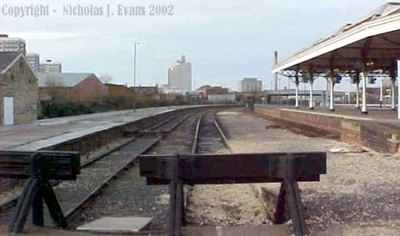In the late 19th and early 20th Century there was mass migration from Scandinavia, mainly Denmark, Finland. Germany, Norway and Sweden, and Russia. The reasons were many but included economic reasons as depression and failed harvests forced people to look for a better life and pogroms against ethnic groups, especially the Jewish people. Hamburg had been the main port for immigrants leaving for the 'New World' mainly USA, Canada, South Africa and Australia but with the development of the Wilson Shipping line with links with Scandinavian ports and Hull they captured a large part of the trade of steerage passengers. Before 1836 there had been about 1000 a year pass through Hull but following this the pace picked up immensely.

The passengers were trans-migrants, that is they were passing through Hull on an onward journey to else where. They boarded Wilson's steamers and landed in Hull. From there they were placed on trains and moved on to Glasgow, Liverpool, London and Southampton where they were boarded on ships bound for their final country of destination. When the trade first started the trans-migrants were landed at the Steam Packet Wharf that was in Humber Dock and in Victoria Dock. From there they would have to walk through the town to the station. One of the first ticket agents was Richard Cortis who had offices in the Minerva Hotel that was handy for Humber Dock. This was dangerous as there was a risk of the spread of diseases and the travellers became pry to racketeers. The Hull Sanitary board wanted to stop this so they were kept aboard the ships for up to four days. This led to many complaints from the Sanitary Board to Wilson Line due to the filth conditions aboard. Berths in steerage could be 6' x 6' in tiers of two or three and four people to a berth!

After 1877 the migrants were usually in Hull only for around 24hrs. Many of the Jewish travellers may have been able to board at Harry Lazurus' Hotel in Postern Gate where they could be fed and looked after before moving onward. A waiting room was built by the North Easter Railway Company, designed by Norbert Prosser, in 1871. Here they could meet the ticket agents and wash and use the toilet. In 1881 the waiting room was doubled in size with a separate waiting room for women and children. The Rail company had a separate platform for the migrants away from the others and accessed directly from the waiting room. Sometimes the trains would be up to 17 carriages. The last four would be for baggage and all pulled by one engine. Due to their length they had precedence on the tracks over others due to their length. Their usual route was via Leeds, Huddersfield and Stalybridge. They often left Hull at around 1100 on Monday and arrived in Liverpool at 1400-1500.
Later the rail tracks were laid to the dock side so the passengers could board direct from the ships. A second platform for immigrants was built at Alexandra dock when that was opened for shipping in after 1881. After 1914 the trans-migration almost ceased due to the WWI.
There are some reminders of these times with the the waiting room still there and several plaques around the city.







Humber Dock is the enclosed dock in the middle of the photo.

Humber Dock Entrance with the Minerva Hotel on the right.
After 1877 the migrants were usually in Hull only for around 24hrs. Many of the Jewish travellers may have been able to board at Harry Lazurus' Hotel in Postern Gate where they could be fed and looked after before moving onward. A waiting room was built by the North Easter Railway Company, designed by Norbert Prosser, in 1871. Here they could meet the ticket agents and wash and use the toilet. In 1881 the waiting room was doubled in size with a separate waiting room for women and children. The Rail company had a separate platform for the migrants away from the others and accessed directly from the waiting room. Sometimes the trains would be up to 17 carriages. The last four would be for baggage and all pulled by one engine. Due to their length they had precedence on the tracks over others due to their length. Their usual route was via Leeds, Huddersfield and Stalybridge. They often left Hull at around 1100 on Monday and arrived in Liverpool at 1400-1500.
Later the rail tracks were laid to the dock side so the passengers could board direct from the ships. A second platform for immigrants was built at Alexandra dock when that was opened for shipping in after 1881. After 1914 the trans-migration almost ceased due to the WWI.
There are some reminders of these times with the the waiting room still there and several plaques around the city.

Immigrant Waiting Room by Paragon Station built 1871 and extended 1881.

Open platform on the left was right next to the waiting room and was separate from the normal traffic.

Plaque found in the station buildings.

In 2001 a sculpture by Neil Hadlock was donated by Sea Trek Foundation of America. The bronze sculpture depicts a family of immigrants that have just left their ship and waiting for their train at Paragon Station.
No comments:
Post a Comment